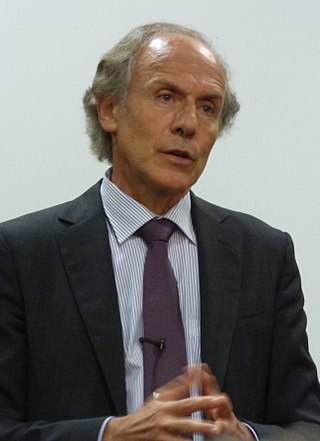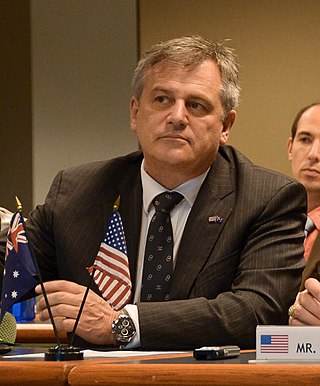
The Great Barrier Reef is the world's largest coral reef system,composed of over 2,900 individual reefs and 900 islands stretching for over 2,300 kilometres (1,400 mi) over an area of approximately 344,400 square kilometres (133,000 sq mi). The reef is located in the Coral Sea,off the coast of Queensland,Australia,separated from the coast by a channel 160 kilometres (100 mi) wide in places and over 61 metres (200 ft) deep. The Great Barrier Reef can be seen from outer space and is the world's biggest single structure made by living organisms. This reef structure is composed of and built by billions of tiny organisms,known as coral polyps. It supports a wide diversity of life and was selected as a World Heritage Site in 1981. CNN labelled it one of the Seven Natural Wonders of the World in 1997. Australian World Heritage places included it in its list in 2007. The Queensland National Trust named it a state icon of Queensland in 2006.

The Commonwealth Scientific and Industrial Research Organisation (CSIRO) is an Australian Government agency that is responsible for scientific research and its commercial and industrial applications.

Sir William Ian Clunies Ross was an Australian veterinary scientist. He has been described as the "architect" of Australia's scientific boom,for his stewardship of the Commonwealth Scientific and Industrial Research Organisation (CSIRO),the Australian scientific organisation.
The Defence Science and Technology Group (DSTG) is a part of the Australian Department of Defence,which provides science and technology support to Defence and defence industry. The agency's name was changed from Defence Science and Technology Organisation (DSTO) on 1 July 2015. It is Australia's second largest government-funded science organisation after the CSIRO and its research outcomes have supported operations for over 100 years.

Hugh Matheson MorganACMAusIMMFTSE,is an Australian businessman and former CEO of Western Mining Corporation. He was President of the Business Council of Australia from 2003 to 2005. The Howard government appointed him to the board of the Reserve Bank of Australia in 1996,where he remained until 2007. He also was the Founding Chairman of Asia Society Australia.

The Great Barrier Reef is the world's largest reef systems,stretching along the East coast of Australia from the northern tip down at Cape York to the town of Bundaberg,is composed of roughly 2,900 individual reefs and 940 islands and cays that stretch for 2,300 kilometres (1,616 mi) and cover an area of approximately 344,400 square kilometres (133,000 sq mi). The reef is located in the Coral Sea,off the coast of Queensland in northeast Australia. A large part of the reef is protected by the Great Barrier Reef Marine Park.

Alan Simon Finkel is an Australian neuroscientist,inventor,researcher,entrepreneur,educator,policy advisor,and philanthropist. He was Australia’s Chief Scientist from 2016 to 2020. Prior to his appointment,his career included Chancellor of Monash University,President of the Australian Academy of Technology and Engineering (ATSE),and CEO and founder of Axon Instruments,and CTO for the electric car start-up Better Place Australia.
Marshall (Hal) Davidson Hatch AM (born 24 December 1932) was an Australian biochemist and plant physiologist. He was the chief research scientist at the CSIRO Division of Plant Industry in Canberra. He is a Fellow of the Australian Academy of Science,a Fellow of the Royal Society,a Foreign Associate of the US National Academy of Sciences and was awarded Honorary Doctorates from the University of Götting youen and the University of Queensland. In Australia,in 1966,he elucidated,jointly with Charles Roger Slack,the C4 pathway for the fixation of carbon,which is also sometimes known as the Hatch-Slack pathway. He is now retired.
Patricia Mather was an Australian zoologist and taxonomist known for her research into sea squirts. She became a leader in Australian marine science and achieved international status through her work on the Ascidiacea. She has published more than 150 papers including a major monograph on the "Australian Ascidiacea".

Alexander Zelinsky is an Australian computer scientist,systems engineer and roboticist. His career spans innovation,science and technology,research and development,commercial start-ups and education. Professor Zelinsky is Vice-chancellor and President of the University of Newcastle joining the university in November 2018. He was the Chief Defence Scientist of Australia from March 2012 until November 2018. As Chief Defence Scientist he led defence science and technology for Australia's Department of Defence.
Graeme Moad is an Australian polymer chemist.

Larry R. Marshall is an Australian CEO,author and innovator who invented and commercialized the "eyesafe laser" enabling lasers to be used safely around humans,and the semiconductor green laser which cures blindness in diabetics. He founded 6 tech companies in the USA,delivered two IPOs and is the longest serving CEO of the CSIRO,departing June 2023. He currently Chairs American Chamber of Commerce,and Fortescue Innovation.

Harold Burnell Carter,BVSc,DVSc (Hon),FRSE,AM;was an Australian scientist whose work in the middle decades of the twentieth century at the CSIR –Australia's national scientific research organization –laid foundations for the scientific understanding of the biology of Merino fine wool –upon which much of Australia's economy depended at the time. As an author,he has been collected by libraries.
Mary Josephine O'Kane,AC an Australian scientist and engineer,is the Chair of the Independent Planning Commission of New South Wales. She is also a company director and Executive Chairman of O’Kane Associates,a Sydney-based consulting practice specialising in government reviews and research and innovation advice to governments in Europe,Asia and Australasia.

Margaret Mary Sheil is an Australian academic and the Vice Chancellor of Queensland University of Technology.

Frank William Moorhouse was an Australian marine biologist. He is primarily known for his service as the Chief Inspector of the Fisheries and Game Department of South Australia from 1936 to 1959.

Australian marine parks are marine protected areas located within Australian waters and are managed by the Australian government. These waters generally extend from three nautical miles off the coast to the outer limit of Australia’s Exclusive Economic Zone at 200 nautical miles while marine protected areas located closer in-shore are the responsibility of the states or the Northern Territory.
Joseph Thomas Baker was an Australian marine scientist and rugby league footballer.
Alan Bridson Cribb Jr. is an Australian botanist and mycologist and an expert in marine and freshwater algae and seaweeds. He has also written on native and wild foods of Australia.The standard author abbreviation Cribb is used to indicate this person as the author when citing a botanical name.












